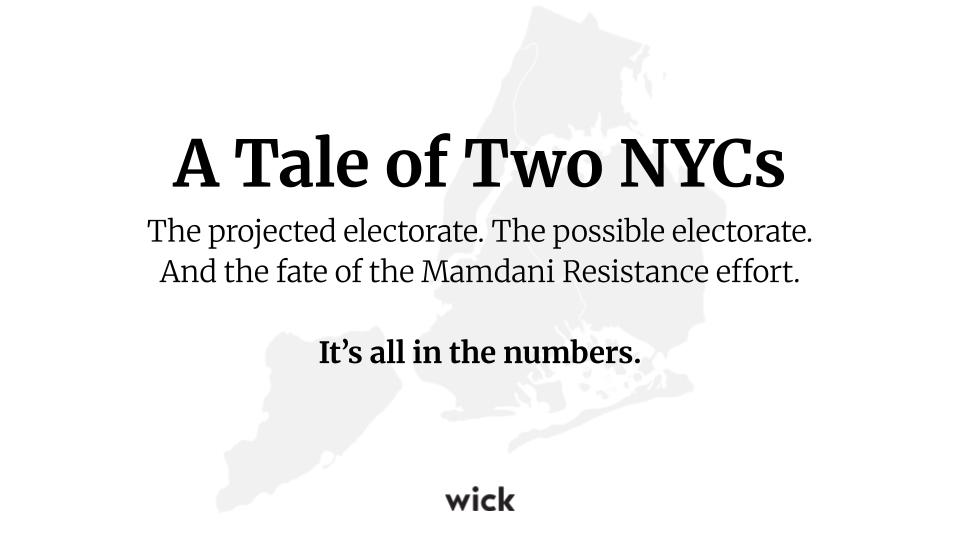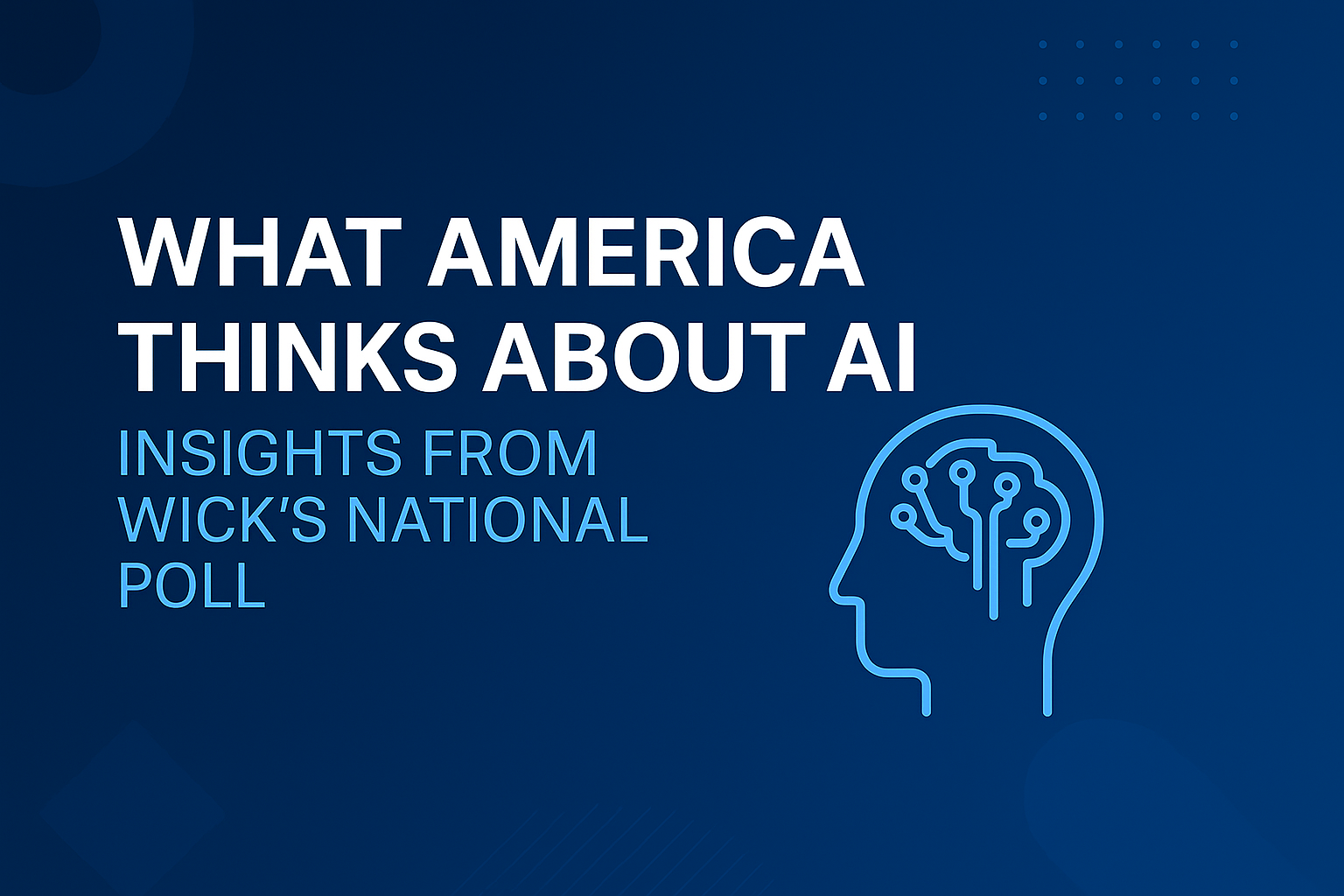Following our July 2025 mayoral poll, we dug deeper into what it would actually take to close Zohran Mamdani’s lead — and whether the projected electorate could deliver that outcome. The answer: even under the most favorable conditions, the current electorate leaves his lead intact. The only path to victory is expanding who votes.
Recenty Wick appeared on 2WAY Tonight to walk through scenarios presented in our deck, “A Tale of Two NYCs: The Projected Electorate, the Possible Electorate, and the Fate of the Mamdani Resistance.”
👉 Watch the August 14 episode of 2Way Tonight
👉 View our Tale of Two NYCs deck
👉 Link to our recent NYC Mayoral Poll findings
What's the best case scenario with the Projected Electorate?
We modeled an A-plus masterclass scenario for the only candidate that can mathematically win, Andrew Cuomo — the kind of campaign where there is a well run third party spend and where you catch all the breaks. One where...
- Undecideds breaking largely to Cuomo
- Some Mamdani supporters switching sides
- Sliwa and Adams voters consolidating
- Adams exiting the race entirely
These shifts reduce Mamdani’s lead in our July polling from +18 to single digits, but even with every break, it's not enough. To beat Mamdani the electorate needs to expand with new voters that will vote for Cuomo.
How Much Electorate Expansion Is Needed?
In the best-case scenario for the Mamdani Resistance groups, winning would require adding 150,000–400,000 new voters, distributed across 10 to 15 targeted cohorts.
Can the Mamdani Resistance Make It Happen?
Yes — the voters are out there. The challenge isn’t finding them, it’s doing the kind of data-driven, labor-intensive outreach needed to bring them in. That work takes time, precision, and persistence — but it’s not the kind of work that makes consultants rich. The consulting class is profit organized first, survival organized second, and victory organized third.
The bigger obstacle, however, may not be technical capacity — it’s political will. Donors from New York City’s conservative wealth class appear far more motivated than the organizations they’re funding. And in a race that demands near-perfect campaign execution to even be competitive, that mismatch is dangerous. It sets the stage for a large, late infusion of money, directed by consultants and organizations who don’t share the donor will and urgency.



.png)
